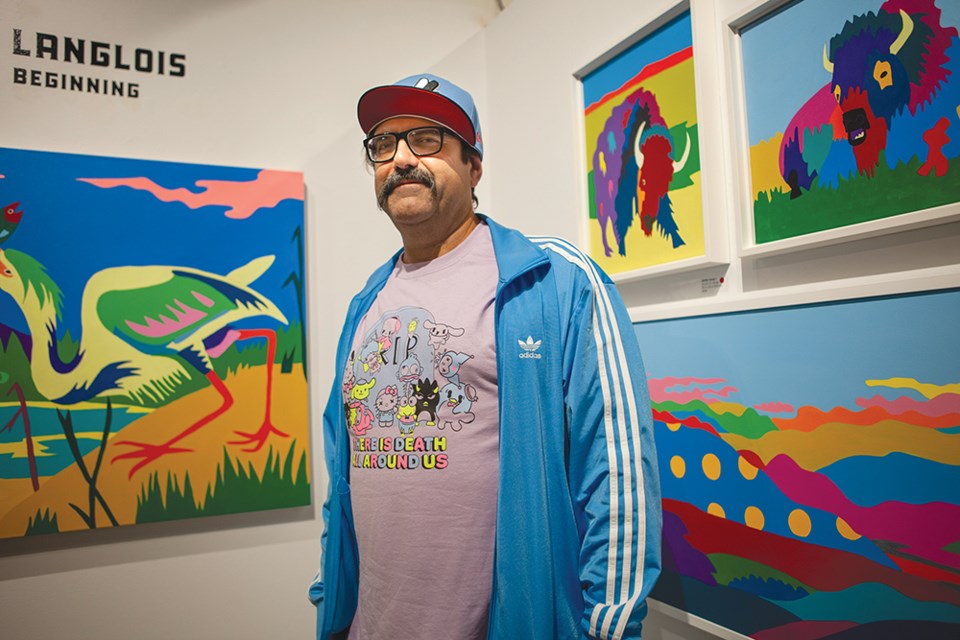Métis painter and muralist Jean Paul Langlois returned to the Sunshine Coast on Nov. 4 to launch An Ending, A Beginning, his showcase of vivid acrylic artworks infused with complex cultural undertones.
Langlois previously exhibited at The Kube gallery in 2019. Originally from Vancouver Island, Langlois now lives and works in East Vancouver. His return to the gallery, which is owned and operated by Jill Pilon and Jody Youngren, was heralded by an evening reception that attracted dozens of admirers to The Kube’s gallery and boutique in upper Gibsons.
Langlois has been in the public eye for more than a decade, exploring the intertwined narratives of First Nations and Métis history as expressed through artifacts of popular culture like cinema Westerns and Saturday morning cartoons. The subtitle of his recent Quest for Something Reel show at Nanaimo’s Gallery Merrick was “painting places I saw in crusty old films in a school gym.”
Prioritizing Métis themes is vital to Langlois’s vision because they are generally underrepresented, he said, and connecting with his own ancestry has been a process of gradual revelation.
“Growing up, we just knew we had Indigenous roots, but I don’t think I even heard that word until I was probably 17 or 18,” he remembered. “And in pop culture, you barely see any representation of Métis at all in film. There was this idea that Indigenous representation was the drunken Indian or the noble savage or the person who talks to ravens and can communicate with wolves. All of which are stereotypes in themselves.”
In 2021, Langlois received a grant from the Canada Council of the Arts to visit locations from three iconic National Film Board movies: Corral (set in Alberta), Paddle to the Sea (Lake Superior), and Nahanni (National Park in the Northwest Territories). Reinterpreting landscapes through plein air painting, Langlois chose effulgent hues to express the junction of physical landscape and constructed cinematic memory.
“At this stage in my career I’m more and more interested in the relationship with colours,” he said. “I’ve always been into bright colours, but now they are expressing something more personal. Way more personal.”
In his series of acrylic paintings Nahanni River of Death: Ragged Range, technicolour hills and clouds mask the sense of disquiet intrinsic to the unforgiving landscapes of Canada’s north. One image in Langlois’s Buffalo Study series includes a human skull at the foot of a supine buffalo, its pose projecting dominance over the invading homo sapiens.
Nature is not always the victor. In The Pillage of Sooke Basin By My Father, a shirtless patriarch extracts a mass of sea creatures from cerulean waters, his arms outstretched in a gesture reminiscent of Old Testament animal sacrifice.
Sublimating Indigenous and settler worldviews means discarding hackneyed clichés, said Langlois. “What is the ‘Indigenous experience’?” he asked. “My stepfather, he had one Indigenous experience. My friend Mavis Henry, a former chief, she had another. All of my white friends have their own. We all share common things, too, but as an artist I also want to become an astute cultural observer.”
An Ending, A Beginning remains on display at The Kube until Nov. 30. Browse to thekube.ca for details.



